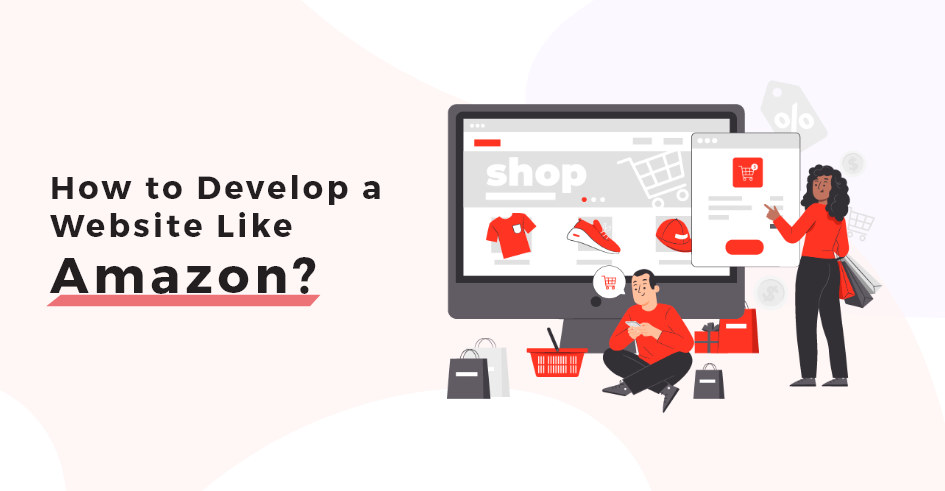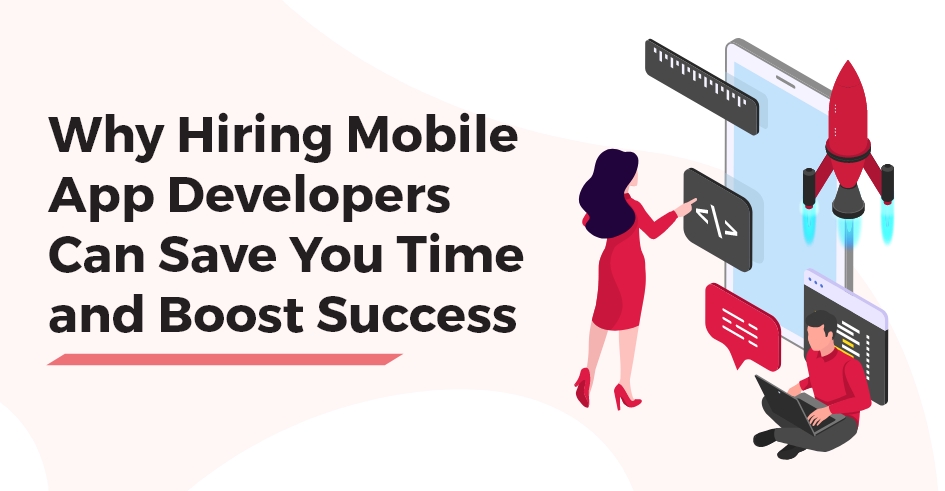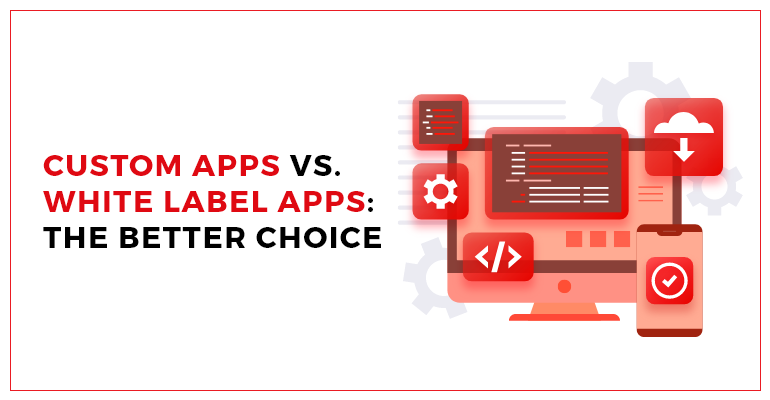The Amazon Marketplace stands as the second-largest company globally in terms of revenue, securing its position as the sixth most profitable company. Demonstrating remarkable growth, Amazon’s sales have surged by nearly $320 billion over the past four years, escalating from $292 billion to $614 billion. Projections indicate that this upward trajectory will continue, surpassing the $700 billion mark this year. The staggering success of Amazon has fueled entrepreneurial aspirations, with many aspiring to create a website akin to Amazon for their eCommerce ventures. In this Blog, let’s delve into the process of crafting an eCommerce website that mirrors Amazon’s success.

Facts about Amazon
Amazon’s approach to winning its customer’s trust has always been their focus since day 1. Amazon’s decision-making process requires staff to examine whether an action is a one-way door—significant and nearly irreversible—or a two-way door, with the ability to change course and go back being just exceptional. Let’s explore some facts about Amazon.
- “AI Ready” Commitment: Providing free AI skills training to 2 million people globally by 2025.
- Competitive Pricing: Independent analysis confirms Amazon’s online prices are 16% lower on average than leading U.S. retailers.
- Employee Compensation: Average pay for customer fulfillment and transportation employees increased to over $20.50 per hour.
- Investment in Delivery Services: Amazon allocates over $840 million for Delivery Service Partner rates and new programs for delivery drivers.
- LinkedIn Recognition: Amazon was named the top U.S. company where people want to work in 2023.
- Employee Insights: Watch Amazon employees discuss career growth and compensation strategies.
- Forbes Recognition: Amazon is recognized by Forbes as one of the World’s Best Employers.
- Veteran Hiring Pledge: Amazon commits to hiring 100,000 veterans and military spouses by 2024.
- Affordable Housing Contribution: Amazon invests $28.5 million in local affordable homes.
- Cybersecurity Training Initiative: Amazon offers free cybersecurity awareness training to other companies and individuals.
Why is a Website Like Amazon Convincing for Sellers and Buyers?
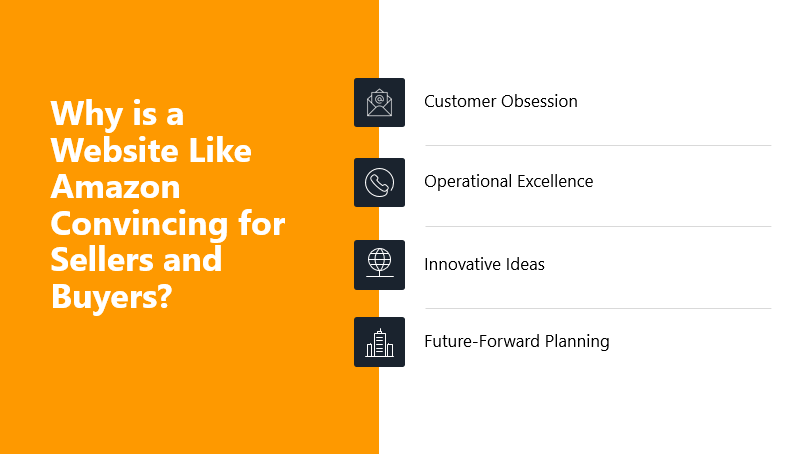
Wondering why a website like Amazon stands out as both convincing and captivating for sellers and buyers alike? Since its launch, Amazon has precisely stuck to four core principles that have become the pillars of its success:
- Customer Obsession: Amazon prioritizes understanding and meeting customer needs above competitor analysis.
- Innovative Ideas: The company actively embraces and encourages innovative concepts to stay ahead in the market.
- Operational Excellence: Continuous improvement in operations is a key focus, ensuring efficiency in all aspects.
- Future-Forward Planning: Amazon strategically plans for the future, anticipating and adapting to evolving market trends.
Amazon goes beyond these principles to embody its vision of becoming the “World’s most customer-centric company,” with a strong emphasis on customer obsession. This approach has garnered widespread acceptance from customers. Here’s an exploration of the factors that have contributed to Amazon’s popularity among buyers.
Factors Contributing to Amazon’s Multivendor Marketplace Popularity
Amazon’s multivendor marketplace popularity is fueled by a seamless user experience. Here is what makes the best:
Vibrant Design
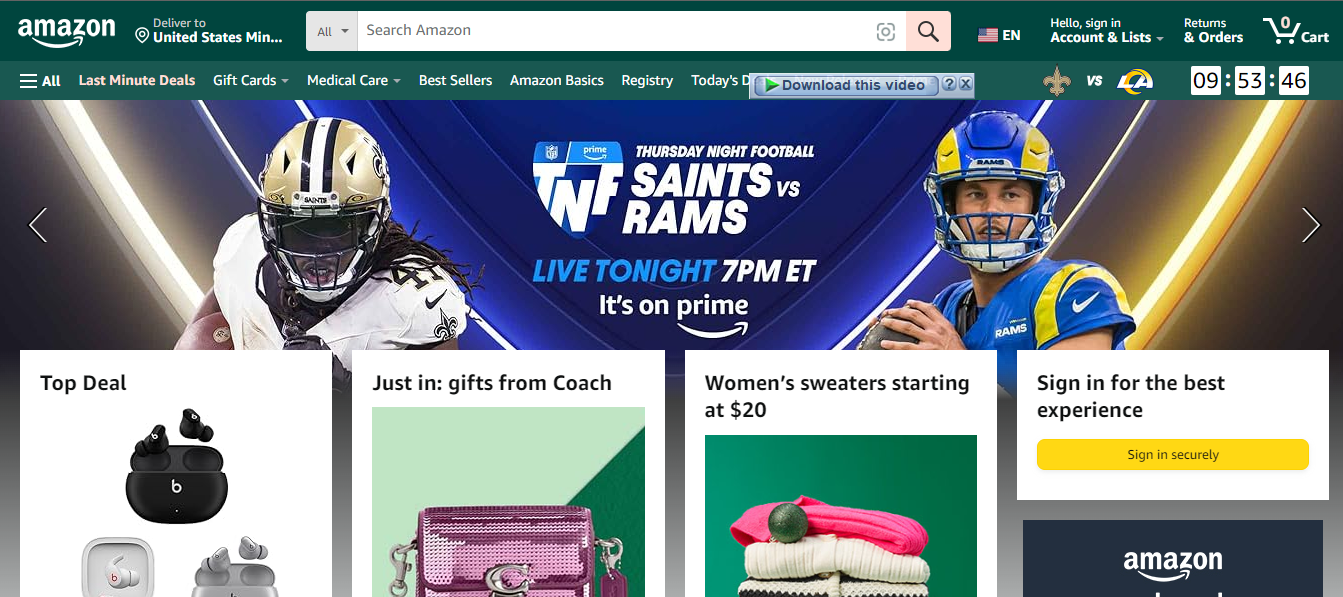
To deliver customer-centric experiences, Amazon has elevated its design to new heights. The user experience (UX) and user interface (UI) features that have particularly resonated with users include:
- Appealing color palette
- Rotating banners on the homepage
- Compact yet simple homepage
- Dedicated blocks for deals
- Multiple product segments
- Diverse sorting and filter options
- Omnipresent search bar, cart, and wishlist
- Inclusion of reviews and ratings
- Informative product pages
- Streamlined checkouts
Amazon’s website homepage has become a hallmark of user-friendly design.
Technical Stack
Amazon’s commitment to an exceptional user experience is fortified by its sophisticated technical stack, incorporating technologies such as:
- MySQL
- DynamoDB
- HTML
- CSS
- JS
- AI (Artificial Intelligence)
- AR (Augmented Reality)
- VR (Virtual Reality) and others
This technological ensemble ensures a seamless browsing experience on Amazon, minimizing lags. AI enhances the user experience by providing personalized product recommendations based on past actions, contributing to user retention and increased conversions. The integration of these technologies has streamlined registration and checkout processes.
Convenience in Return, Refund, and Payment
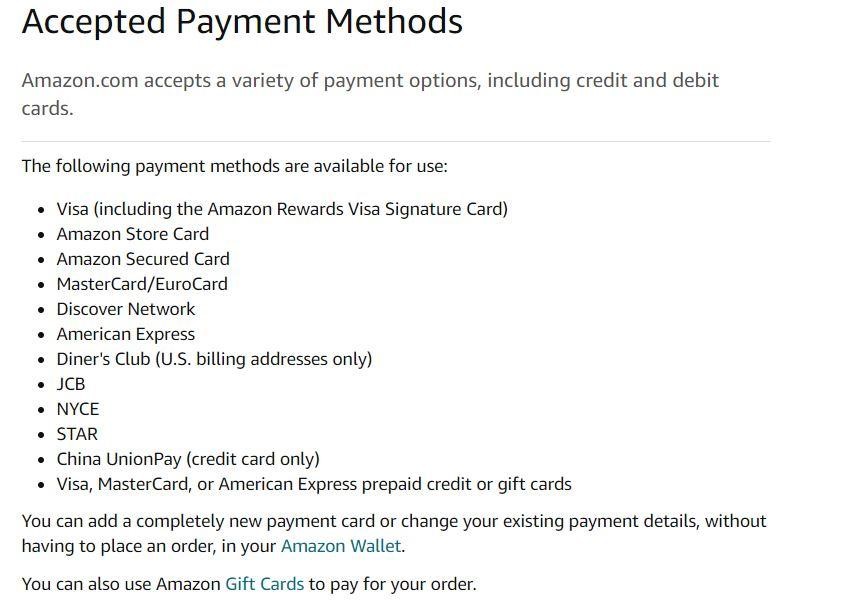
Complementing its design and technology, Amazon offers flexibility in returns, refunds, and secure payment options. Amazon has revised its return and refund policies, extending the duration for return requests and introducing features like ‘same-day refund’ and ‘refund to source account.’
Acknowledging the diverse range of buyers and product categories, Amazon provides various payment options, including cash, cheque, digital payment modes, cards, and Amazon Pay.
Safety and Security
Recognizing the shared concerns of both buyers and sellers in a multi-vendor marketplace, Amazon prioritizes security through AWS cloud security. This ensures meticulous monitoring of all activities (A-Z) and safeguards the shared data, instilling confidence in both parties.
Transparent Policies
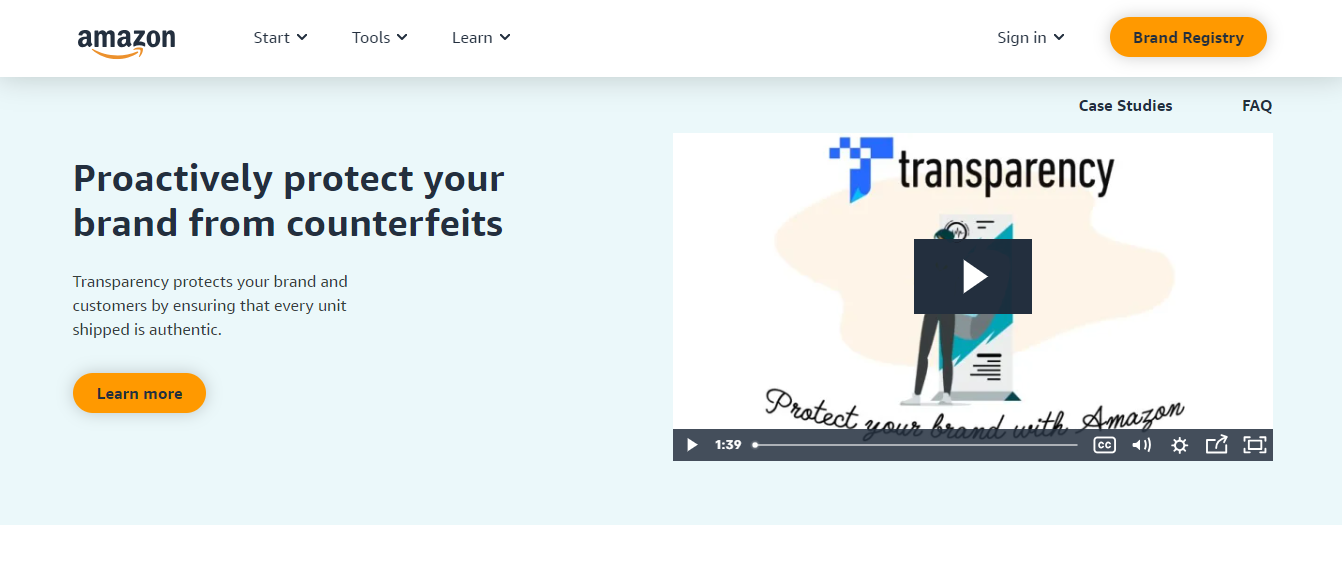
Amazon’s popularity and profitability stem from its straightforward and transparent business model. The absence of hidden terms and conditions, coupled with clearly defined rates for selling fees, listing fees, and subscription fees, fosters reliability. Sellers can conduct profitable businesses without unexpected costs, and buyers can confidently access the products they desire.
Creating an eCommerce Website Like Amazon: A Comprehensive Guide to Build a Multivendor Marketplace
Developing a multivendor marketplace website like Amazon involves a systematic approach. Follow these steps to create your eCommerce platform seamlessly:
Step 1: Determine Your Products and Potential Customers
The initial step in building a successful multivendor marketplace, reminiscent of Amazon, is a meticulous assessment of your product offerings and identifying your potential customer base. This strategic analysis sets the foundation for your eCommerce venture, guiding subsequent decisions and optimizations.
Expertise
Conduct in-depth research to understand market demands, trends, and gaps. Your expertise in choosing products that align with consumer needs and preferences is crucial. Consider a balance between niche offerings and broader product categories. Evaluate competitors in your chosen space. Identify successful strategies and areas where you can differentiate your marketplace. Expertise in competitive analysis contributes to a well-informed product selection process.
Authoritativeness
Showcase your authority in the chosen industry. Understand the nuances of the products you plan to offer and how they fulfill consumer needs. Authoritativeness in product knowledge instills confidence in both customers and potential vendors. Stay abreast of current market trends. Being authoritative in recognizing emerging trends positions your marketplace as dynamic and responsive to evolving consumer preferences.
Trustworthiness
Building trust with potential customers starts with offering products they genuinely need. Trustworthiness is established when customers believe your marketplace provides reliable solutions. Transparent communication about your product selection criteria enhances trust. If involving multiple vendors, assess the credibility and reliability of potential sellers. Trustworthy vendors contribute to the overall credibility of your marketplace.
Step 2: Pick a Domain and Platform
Selecting a memorable and unique domain name is paramount. Choose a platform that aligns with the current trend of mobile traffic dominance. Consider platforms like Magento for their open-source nature, allowing extensive customization and robust security features to handle large-scale operations.
Step 3: Choose UX/UI and Required Technologies
Crafting an engaging user experience is key to success. Carefully select themes and designs that complement your marketplace. Ensure a balanced color palette and prioritize features like an advanced search, wishlist, and cart for enhanced user experience. Technical support is crucial for premium design implementation.
Step 4: Plugin Buyer Features
Enhance your website with buyer-centric features, aligning with the standards set by Amazon. Prioritize features like easy sign-ins, social account registration, one-click ordering, simple checkout, comprehensive account pages, AI-powered notifications, geo-location tracking, and personalized product recommendations.
Step 5: Focus on Seller Features
Acknowledge the importance of sellers in a multivendor marketplace. Implement features like easy product listings, bulk inventory uploading, integration capabilities, a simplified dashboard, efficient price calculators, and detailed profit breakdowns. A feature-rich platform attracts more vendors, boosting your marketplace.
Step 6: Add Admin Features
Facilitate overall management with essential admin features, including automated vendor management, commission calculators, vendor payouts, product approval checklists, transaction reports, tax calculators, return and refund management, analytics, multi-language support, and support gateways for vendors and buyers.
Step 7: Add Shipping and Payment Options
Forge partnerships with reliable shipping providers and integrate flexible payment options. Support popular methods such as cash on delivery, Buy Now Pay Later (BNPL), PayPal, Stripe, Braintree, credit/debit cards, cheques, bank transfers, digital payments, and cryptocurrencies to cater to a diverse user base.
Step 8: Go Through Quality Assurance Testing
Before launch, conduct Quality Assurance (QA) testing to ensure seamless functionality. Evaluate the performance of buyer, seller, and admin features, validate payment methods, and identify and rectify any issues. A thorough QA test ensures a flawless marketplace experience.
Step 9: Launch and Promote the Store
The final steps involve launching your marketplace and implementing effective promotional strategies. Choose suitable platforms for your launch and leverage social media marketing, influencer marketing, video marketing, and ad campaigns to promote your eCommerce platform. Seek professional guidance to optimize your promotional efforts and boost sales.
Following these steps, you can create a robust multivendor marketplace website like Amazon, providing a seamless experience for both buyers and sellers.
Cost to build a website like Amazon.
The cost to create a robust multi-vendor website similar to Amazon typically falls within the range of $30,000 to $150,000. It’s important to note that this estimate may vary based on specific features and functionalities desired for your platform. Additionally, incorporating extensions or additional features could slightly increase the overall cost.
Best 13 Sites like Amazon
Below, we have compiled a list of Amazon’s top competitors so you can find the best alternative to Amazon’s marketplace. Let’s get to them:
1. eBay
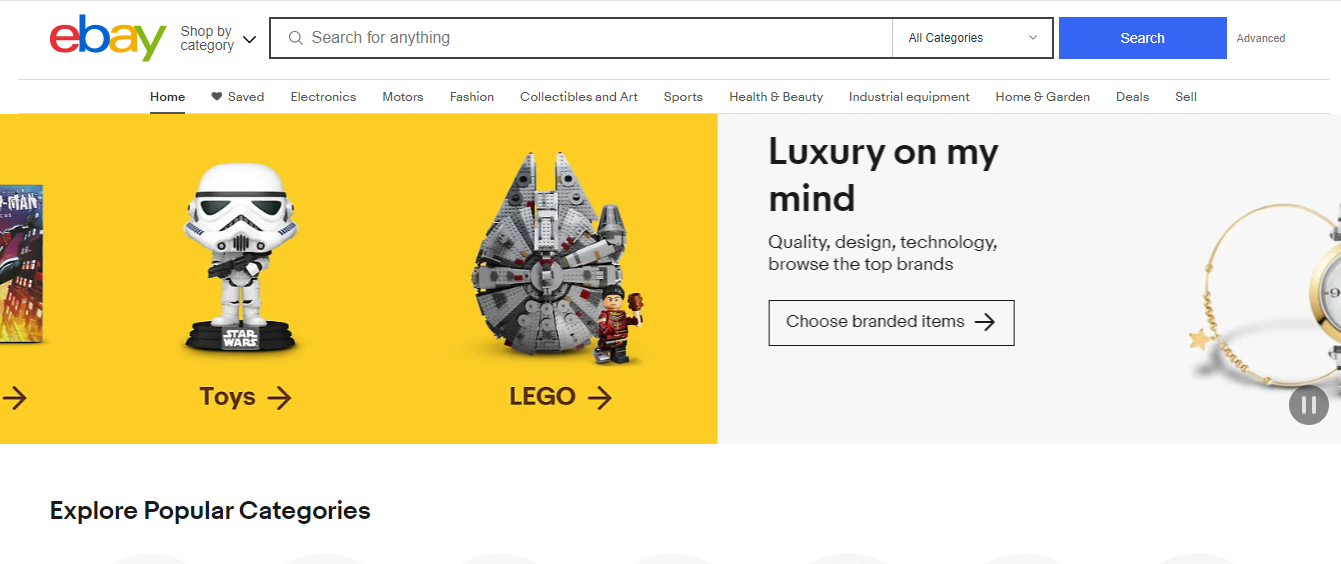
- Bidding feature: Allows you to pay what you want through auctions.
- Buy It Now: Offers instant purchases with frequent discounts.
- Best Offers: Provides opportunities for excellent bargains.
Known for its bidding feature, eBay allows you to pay what you want, fostering a unique shopping experience. The platform offers frequent discounts, both weekly and seasonal, making it a go-to choice for savvy shoppers. Unlike Amazon, a website like eBay acts as a mediator between sellers and buyers, presenting a mix of outright purchases and auction-style listings.
2. Overstock
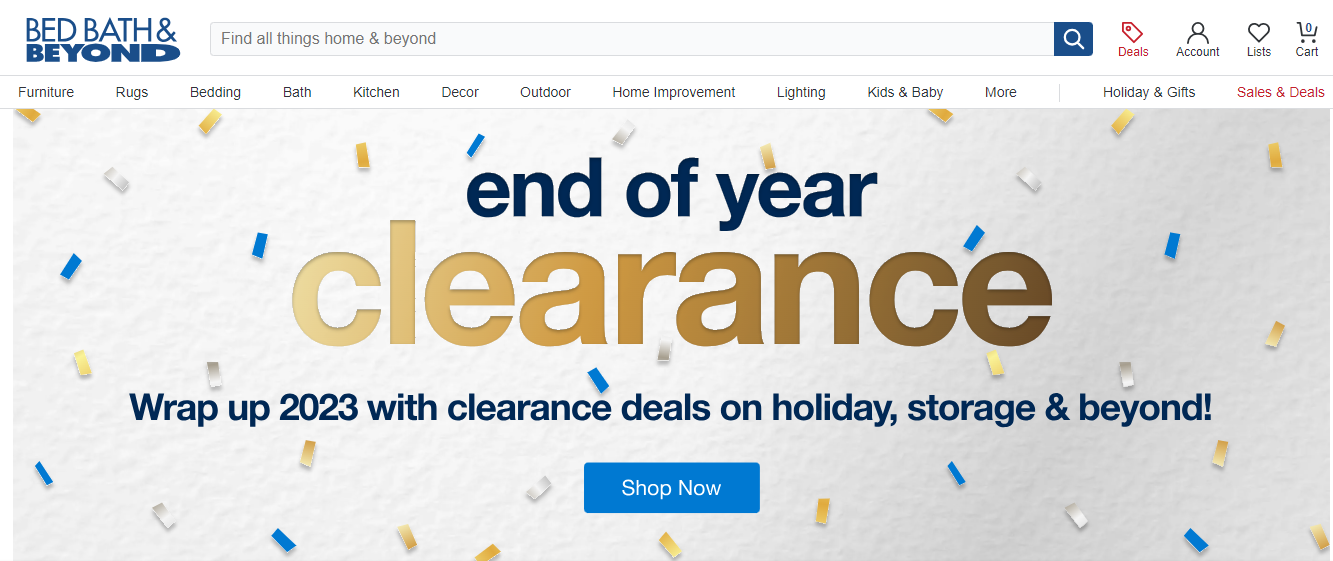
- Club-O-Gold rewards program: Grants free shipping and 5% back on each order.
- Deals page: Instantly showcases items on sale.
- Worldstock program: Supports artisans worldwide, reinvesting 60% of revenue in their crafts.
Overstock, formerly an online warehouse for closeout furniture, home decor, and other items, purchased Bed Bath & Beyond’s intellectual property. Overstock.com began as a seller of surplus goods, evolving into a platform for both surplus and new items. With a focus on community responsibility, Overstock has a Club-O-Gold rewards program offering free shipping and cashback on orders. The Worldstock program supports artisans globally, making it a unique destination for budget-friendly and ethically sourced products.
3. Newegg
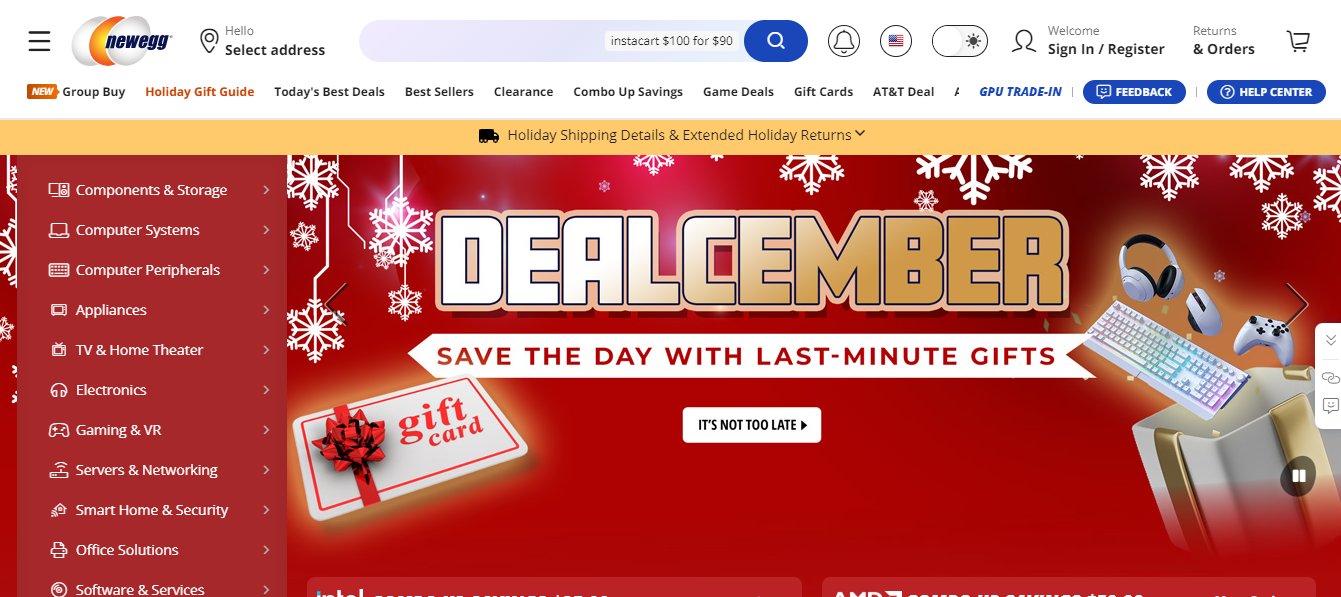
- Specializes in electronics: Focuses on tech-related products.
- Daily deal: Offers daily discounts on selected items.
- Free 3-day shipping: Ensures quick delivery on all orders.
Specializing in electronics, Newegg.com competes with Amazon in the tech domain. With daily deals, a price match guarantee, and free 3-day shipping, Newegg appeals to tech enthusiasts. The platform’s commitment to rapid delivery and quality customer service positions it as a strong contender in the online marketplace.
4. Zappos

- Outstanding customer service: Known for unparalleled customer support.
- Generous return policy: Accepts returns up to a year after purchase.
- Safe Shopping Guarantee: Protects against credit card fraud.
A subsidiary of Amazon, Zappos.com focuses on shoes, clothing, and accessories. Renowned for exceptional customer service, Zappos offers hassle-free returns up to a year after purchase. The platform’s Safe Shopping Guarantee protects users from credit card fraud, ensuring a secure and enjoyable online shopping experience.
5. AliExpress
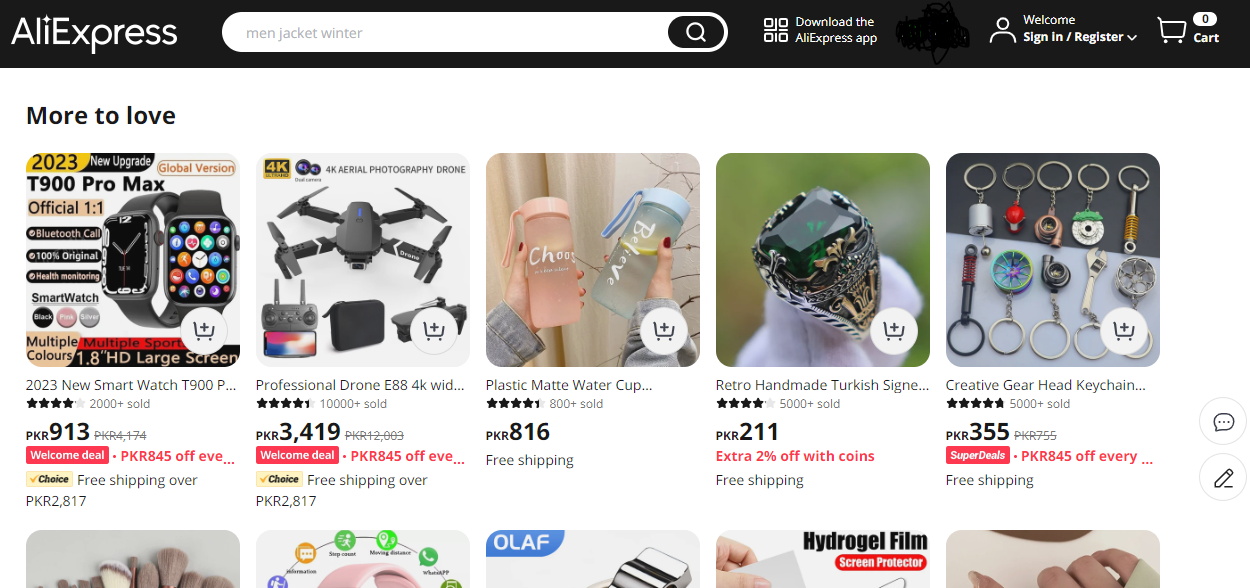
- Low prices: Direct-from-factory pricing for significant savings.
- Wide variety: Expanded offerings with many items priced under $5.
- Run by Alibaba Group: Ensures guarantees and protections for buyers.
Operated by the Alibaba Group, AliExpress.com offers factory-direct pricing on a wide array of items. By eliminating intermediaries, AliExpress maintains low prices and provides guarantees for buyer safety. With diverse offerings priced under $5, AliExpress caters to budget-conscious shoppers.
6. Jet.com
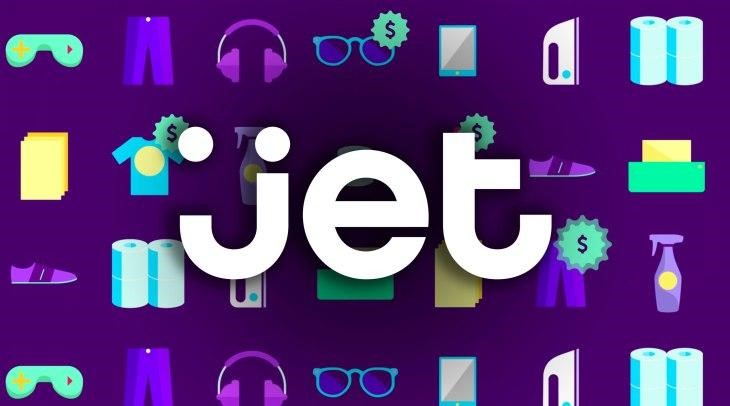
- Name brand items: Offers popular products at low prices.
- Refer-A-Friend program: Provides discounts on orders.
- Seasonal deals: Features promotions with 50%+ off retail prices.
Founded by a former Amazon employee, Jet.com focuses on delivering brand-name products at competitive prices. With a “Refer-A-Friend” program, seasonal deals, and promotions offering significant discounts, Jet.com stands out as a viable alternative. While Jet.com was once operational, please note that as of June 4, 2020, it is no longer available. According to a person with firsthand knowledge of the transaction, Walmart Stores is buying Jet.com for $3 billion, confirming reports that have been circulating all week regarding the bid for Jet.com.
7. Barnes & Noble
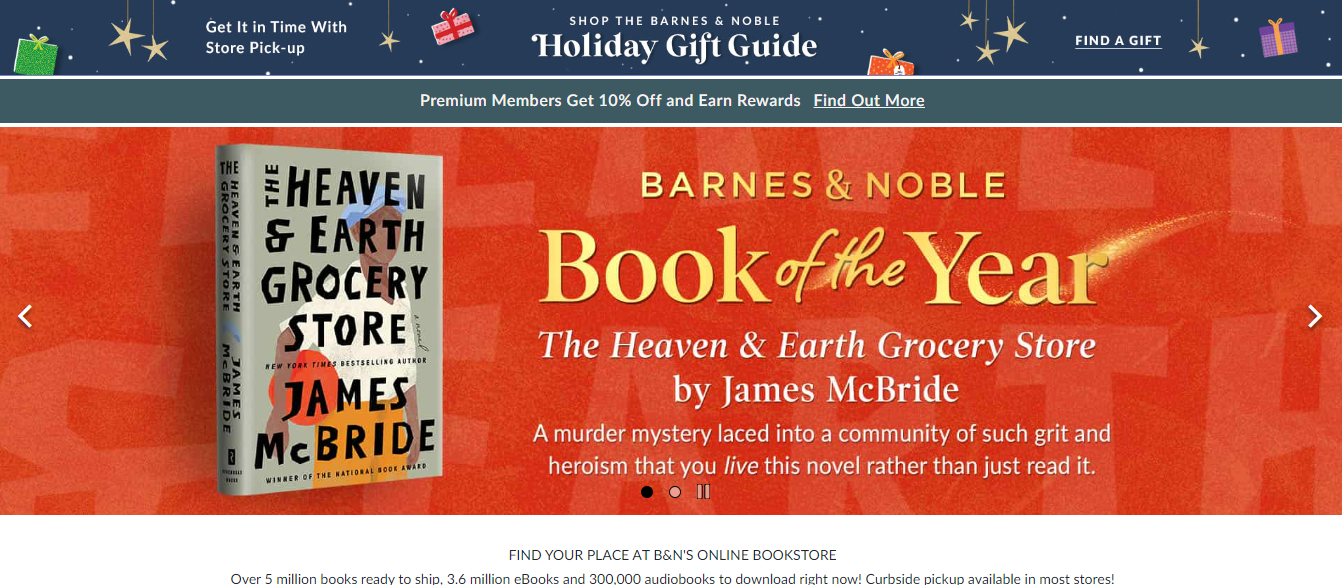
- Focus on books: Extensive collection with free shipping on orders over $25.
- B&N Membership: Offers free shipping and exclusive online discounts.
- Diverse product range: Expands beyond books to various categories.
Initially, a book seller, BarnesAndNoble.com has expanded to include a wide range of products. With a vast selection of books, ebooks, textbooks, and more, Barnes & Noble provides an alternative for book lovers. Free shipping on orders of $25 or more and a B&N Membership offering additional benefits make it a compelling choice.
8. Rakuten
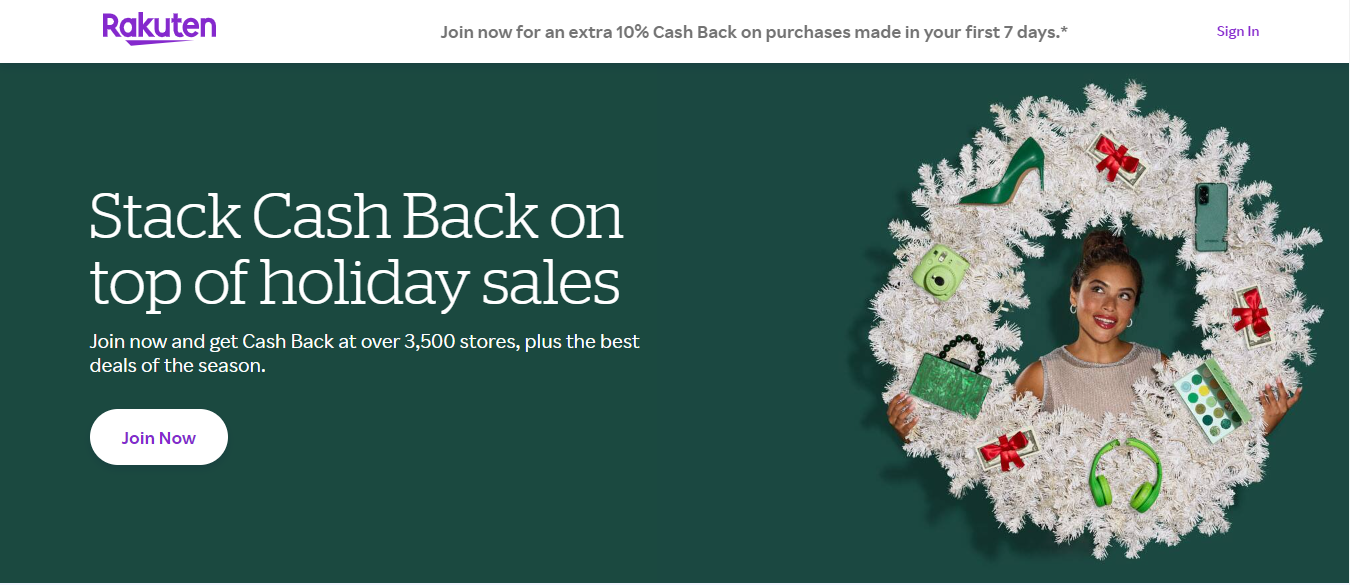
- Super Points program: Rewards users with 1% back on each purchase.
- Varied departments: Offers a range of shopping categories.
- Owns Ebates.com: Provides additional deals and discounts for online purchases.
Formerly Buy.com, Rakuten.com connects businesses with customers and features a “Super Points” program offering rewards for purchases. With various departments to shop from and ownership of Ebates.com, which provides online purchase deals, Rakuten provides a diverse shopping experience.
9. Walmart
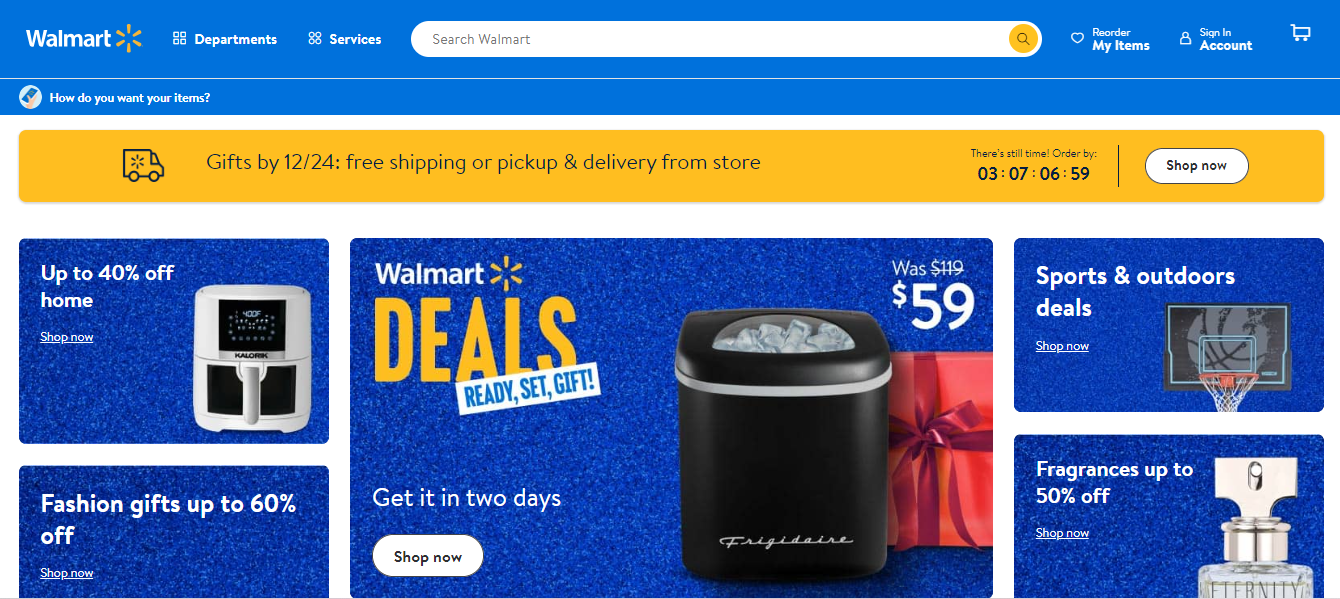
- Everyday low prices: Known for budget-friendly offerings.
- Free 2-day shipping: Available on millions of items for orders over $35.
- In-store pickup: Option to pick up items from a nearby Walmart store.
A global retail giant, Walmart.com offers bargains on a wide range of items. With everyday low prices, free 2-day shipping on millions of items, and the option to pick up orders in-store, Walmart stands out as a go-to choice for budget-conscious shoppers.
10. Target
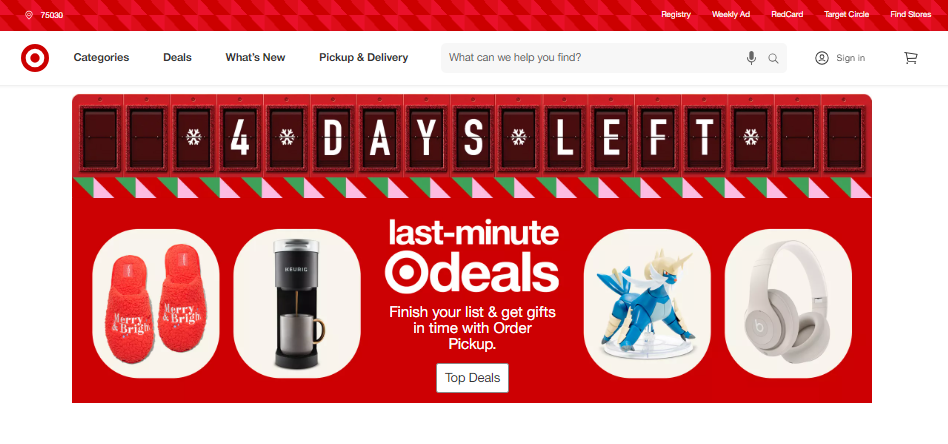
- Quality goods: Prices are almost as low as Walmart’s, with a focus on quality.
- Free 2-day shipping: On orders of $35 or more.
- Seasonal deals: Offers great promotions during different times of the year.
While slightly pricier, Target.com offers quality goods with prices almost as low as Walmart’s. With free 2-day shipping on orders of $35 or more and great seasonal deals, Target caters to those looking for trendy and cutting-edge products.
11. QVC.com

- Daily deals: “Today’s Special Value” accessible anytime on the homepage.
- Payment plans: Allows payments over time for select items.
- Video demonstrations: Shows products in action for informed purchases.
QVC.com combines home television shopping with online convenience. With features like the “Today’s Special Value” daily deal and payment plans, QVC provides a unique shopping experience. It offers video demonstrations of products in use, enhancing the online shopping journey.
12. BestBuy.com
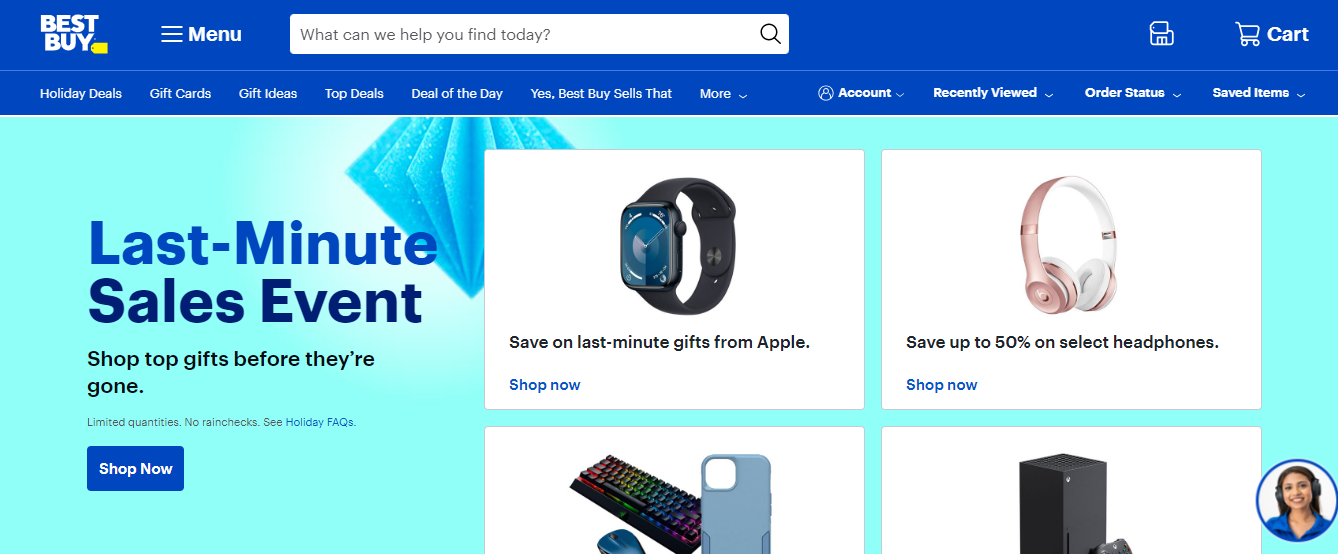
- Great deals on electronics: Specializes in quality electronics.
- Periodic sales: Offers small-window sales for additional savings.
- Geek Squad services: Provides electronics support and fair warranties.
BestBuy.com specializes in electronics, providing great deals on laptops, computer accessories, TVs, and more. With the lowest price guarantee, free shipping, and easy returns, BestBuy.com ensures a seamless online shopping experience for tech enthusiasts.
13. Etsy
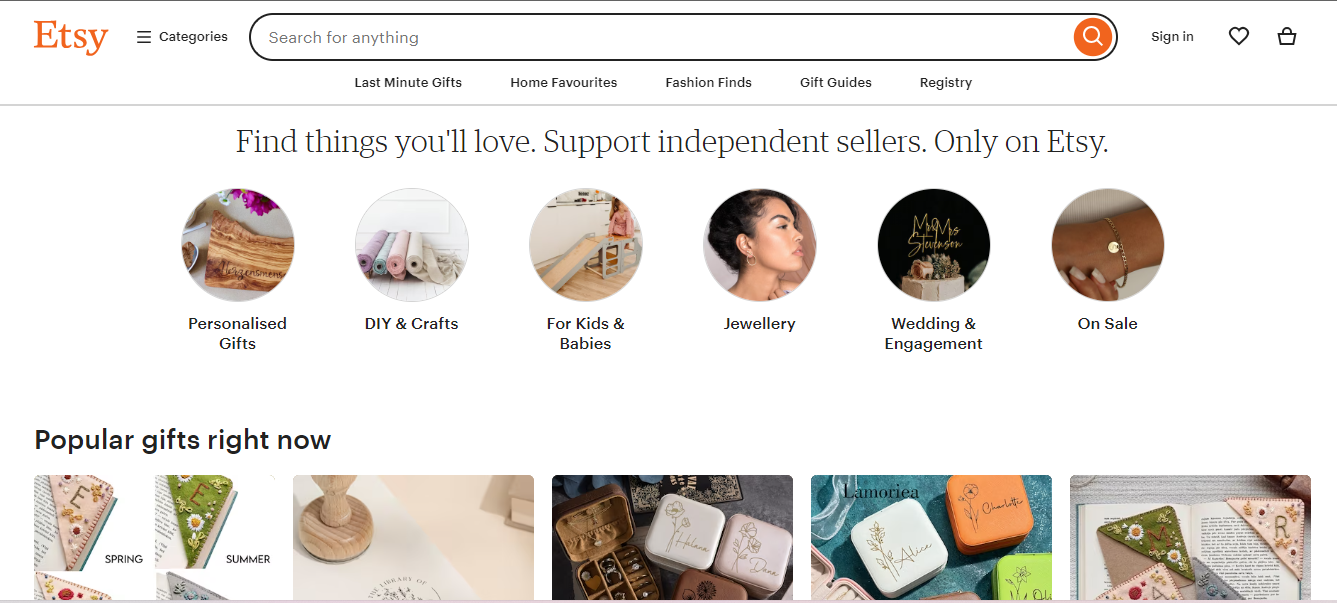
- Handcrafted goods: Specializes in unique, handmade items.
- Supports artisans: Directly contributes to independent creators.
- Exceptional customer service: Sellers prioritize customer satisfaction.
Etsy.com stands out as a marketplace for handcrafted and vintage items. With a focus on unique, artisanal products, Etsy offers a different shopping experience. The platform’s commitment to quality, individuality, and customer service makes it an ideal choice for those seeking distinctive items.
In conclusion, these Amazon alternatives provide diverse options for online shoppers, each with its unique features and specialties. Whether you’re looking for tech gadgets, fashion, or handcrafted goods, exploring these platforms offers a rewarding and budget-friendly online shopping experience.
Which Amazon competitors have free shipping?
Amazon stands out with its noteworthy feature of providing complimentary 2-day shipping for most orders exceeding $35. Similarly, other websites akin to Amazon extend the convenience of free shipping, typically contingent on the total amount spent.
- Overstock: Enjoy free shipping on orders surpassing $40.
- NewEgg: Benefit from free shipping within three days or less for all orders.
- Zappos: Available for free shipping within 4-5 days.
- Jet: Experience free shipping on orders exceeding $35.
- Barnes & Noble: Receive free shipping on orders surpassing $25, delivered within 4-5 days.
- Walmart: Enjoy complimentary shipping on orders exceeding $35.
- Target: Benefit from free shipping on orders surpassing $35.
- Best Buy: Access free shipping on orders exceeding $35, excluding large, scheduled items.
These alternatives to Amazon share the convenience of cost-free shipping, catering to diverse preferences, and ensuring a seamless shopping experience.
Which sites offer services like Amazon Prime?
Amazon Prime offers a suite of services, encompassing complimentary 2-day shipping, discounts on orders, exclusive deals, and access to Amazon Prime Music or Amazon Prime Video. Exploring alternatives with comparable yearly subscription models, various shipping services provide enhanced benefits:
- ShopRunner: Avail yourself of free 2-day shipping across a multitude of stores, including renowned brands like Staples, Lord & Taylor, Kate Spade, and even Newegg.
- Google Express: Experience seamless online shopping tailored to your preferences, benefit from same-day delivery, and enjoy free shipping on orders totaling $15 or more.
- NewEgg Premier: Offers expedited delivery not only for yourself but also for friends and family. Enjoy additional perks such as free returns, exemption from re-stocking fees, and more.
- FreeShipping.org: While not functioning as an independent ecommerce platform, FreeShipping.org serves as a repository of complimentary shipping promotional codes for your favorite everyday websites.
Exploring these Amazon alternatives provides users with diverse options for subscription-based shipping services, each tailored to meet varying needs and preferences.
Need a website like Amazon? Reach out to us now and let us know your requirements!!
Create the Next marketplace like Amazon with TechnBrains
TechnBrains can help you build the next big website like Amazon. Here is how:
- Strategic Expert Team: Assemble a skilled team with expertise in e-commerce development to ensure the implementation of cutting-edge features and a seamless user experience.
- User-Centric Design: Prioritize a design focused on ease of navigation, responsive layouts, and an intuitive interface to enhance user satisfaction and accessibility.
- Advanced Security Protocols: Implement state-of-the-art security measures to safeguard user data, transactions, and overall platform integrity, earning users’ trust.
- Efficient Customer Support: Establish an efficient customer support system to address user queries promptly, contributing to the authoritative and trustworthy image of the platform.
- Continuous Innovation: Implement a system for continuous improvement based on user feedback, technological advancements, and industry trends, ensuring ongoing competitiveness and relevance.
Faqs
Which Platforms Offer Competitive Prices Comparable to Amazon?
- AliExpress: By eliminating the middleman, AliExpress offers exceptionally low prices, making it a cost-effective alternative to Amazon.
- Walmart: Renowned for its everyday low prices, Walmart provides a budget-friendly shopping experience, along with frequent bargains.
- eBay: With a unique bidding system, eBay empowers users to secure items at potentially lower prices through auctions.
- Zappos: As a subsidiary of Amazon, Zappos keeps its prices competitive, offering a reliable alternative for budget-conscious shoppers.
- Target: Known for seasonal sales and consistently low prices, Target stands out as a reliable and affordable shopping destination.
Which E-Commerce Platforms Ensure Reliable Delivery Comparable to Amazon?
- Newegg: Orders typically arrive within two days, and the platform often provides free shipping, ensuring a swift and cost-effective delivery experience.
- Walmart: Offering diverse shipping options, including Grab-&-Go local pickup points and in-store pickups, Walmart provides a reliable and convenient delivery service.
- Best Buy: Quantifying delivery times based on item types, Best Buy clearly communicates expected arrival dates, factoring in holidays and current demand to ensure a reliable delivery experience.
- Zappos: Although delivery takes 4-5 days, Zappos guarantees reliable shipments, providing peace of mind to customers.
How Much Does It Cost to Develop a Marketplace App?
The cost of developing a marketplace app varies based on features, complexity, and platform. Factors like user authentication, payment processing, and app design influence costs. A detailed consultation with app developers is recommended for accurate cost estimates.
How Do I Create a Marketplace App?
Creating a marketplace app involves several steps, including creativity, market research, design, development, testing, and deployment. With us, you get engaged with experienced app developers, define your app’s unique features, and ensure a user-friendly interface for optimal results.
How Long Does It Take to Develop a Marketplace App?
The development timeline depends on the app’s complexity and features. A basic marketplace app may take a few months, while more intricate solutions can extend the timeline. Collaborate closely with us to establish a realistic timeframe.
How Do I Make an App Like Facebook Marketplace?
Creating an app similar to Facebook Marketplace involves defining unique features, user interfaces, and functionalities. Focus on user experience, security, and seamless transactions. Consult with experienced app developers like TechnBrains to navigate the development process efficiently.


